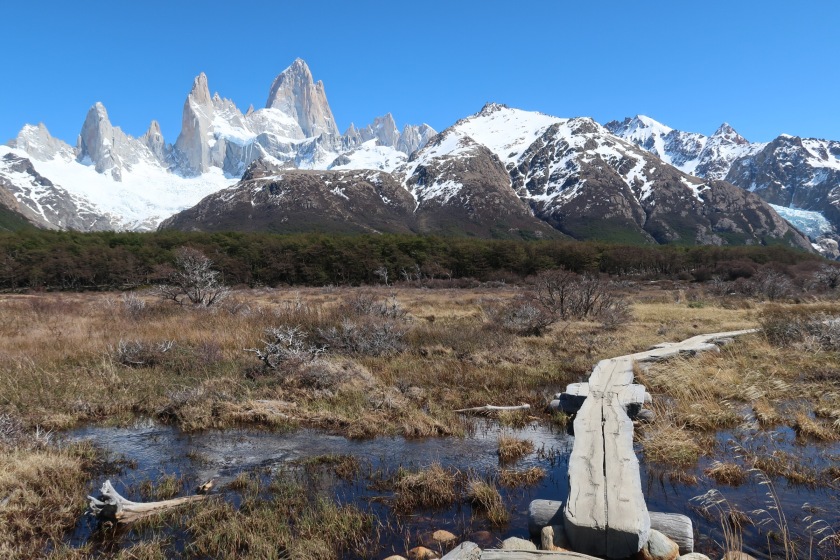Departing Peninsula Valdez we thought we’d left the whales behind. But there they were again; puffing clouds of water into the air above Puerto Madryn’s bay. This town is where Welsh settlers first arrived 150 years ago. They soon moved on to other parts of Patagonia, as did we.

14 hours of overnight bus later we reached Esquel. Back in the mountains we only had a few hours for a quick trek and a look at The Old Patagonian Express. The plan had been to spend a night in this town, but the bus company cancelled their departure and forced us to leave a day early. Two overnight buses in a row. Joy. Top tips for making such journeys as comfortable as possible:
– Pack something to put over your eyes – oncoming headlights, street lights and the overhead TV are likely to disturb you
– Bring ear plugs
– Herbal sleeping pills seem to work a charm
– Even though in semi-cama class you get a seat that reclines no less than 130° pack a bag on which you can raise your feet a little more
– This is one of the few occasions where I wished I had one of those blow-up neck pillows
– Sometimes you get food and drink, sometimes you don’t – best to bring some empanadas just in case
So, 23 hours (!) later we arrive into El Calafate. The journey here took us through the vast emptiness of Patagonia along the famous Ruta 40 which occasionally was no more than a gravel track. El Calafate is a tourist town. People come here for one main reason: to see the immense glaciers nearby.
Our day tour included transport to the Glaciers National Park 80km away. Here are immense mountains, ice-cold lakes and the third largest ice sheet in the world (after Antarctica and Greenland). Dozens of glaziers creep slowly outwards from the ice sheet, including the Perito Moreno glacier. Viewed from a boat the 20-storey high edge of the glacier is an awesome sight.
The creeks and sounds of rushing water are easily heard from the walkways just across from the glacier. Here the ice meets a rocky peninsula, resulting in frequent ice calving – when a particularly large chunk falls the sound is surprisingly, explosively loud. Seeing this gargantuan tongue of ice stretch into the distance up into the mountains makes you feel very small. And cold.
Hiker heaven can be found three hours down the road in El Chalten. Snaking out from the town are numerous trails of varying length and you don’t have to go far along them for stupendous mountain views. Here you’ll see Cerro Torre and Fitz Roy – two very narrow peaks which tower like fingers pointing at the blue sky.

Looking at local walking maps we chose our routes and noted that, just beyond those mountains, there is nothing but white. This is the same ice sheet to be found near El Calafate – so vast that much of it remains uncharted.
During our time here we enjoyed two 8-hour hikes and I can think of few others which have been so scenically rewarding, nor as popular. At around 5pm every day a trickle of hikers return to El Calafate from their day in the mountains. The trickle soon becomes a flood – long lines of expensive outdoor gear-clad people, exhausted and triumphant. Hipster craft beer bars and coffee shops group along the street at the end of the trails, ready to tempt in the weary.
Back to El Chalten for a flight to Ushuaia. It was delayed because of a strike but, flying along the Andes and past the Beagle Channel, all frustrations were quickly forgotten. This flight wasn’t part of the original plan but, as of a few weeks ago, we now needed to get to the southernmost city in the world by a certain date. Find out why in the next blog.

Sounds a lot of fun but exhausting. The coach travel tips are good
LikeLike